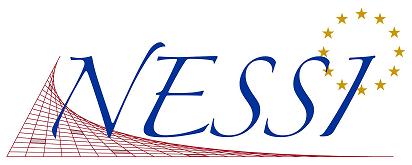

 |
The Fourth International Conference on Emerging Security Information, Systems and Technologies SECURWARE 2010 July 18 - 25, 2010 - Venice/Mestre, Italy |
|
| Details: |
|
All CPS Publications are included in the IEEE Xplore All CPS Publications are archived in IEEE Computer Society Digital Library (CSDL) Authors of selected papers will be invited to submit extended versions to a IARIA Journal |
All tracks/topics are open to both research and industry contributions.
Tracks:
ARCH: Security frameworks, architectures and protocols
Formal aspects of security; Security analysis methodologies; Security verification; Security protocols; Security architectures and formalisms; Security and design vulnerability; Security and privacy protection; Performance and security; Secure group communication/multicast; Software design security; Middleware security; Security for nomadic code; Intrusion detection systems; Static analysis for software security; Security modeling
SECMAN: Security management
Identity management; Security law enforcement; PKI; PKI Key management; Incident response planning; Intrusion detection and event correlation; Firewalls; Trust management; Software security assurance
SECTECH: Security technologies
Secure protocols; Applied cryptography; Smart cards; Biometrics; Digital rights management; Electronic surveillance; Database security
SYSSEC: System security
Internet security; Security in wireless; Sensor/cellular network security; Ad hoc network security; Security in peer-to-peer networks; Security in wireless multimedia systems; Security in different networks (mesh, personal, local, metropolitan, GSM, Bluetooth, WiMax, IEEE 802.x, etc.); Security of emergency services
INFOSEC: Information security
Information hiding; Anonymity; Authentication; Data Integrity; Security data mining; Data confidentiality and integrity; Information flow protection; Trustworthy networks: authentication, privacy and security models; Secure service discovery; Secure location-based service; Information survivability
MALWA: Malware and Anti-malware
Threat taxonomies and modeling; Security threats; Threats propagation; Anti-malware technologies; Engineering anti-malware; Anti-virus, anti-spyware, anti-phishing; Malware propagation models; Profiling security information; Vulnerability analysis and countermeasures; Denial of service attacks; Measurements and metrics; Testing samples and techniques; Quarantine/reuse decisions; Anti-malware tool performance; Anti-malware tool suites; Open-source anti-malware; Host-based anti-malware; On-line anti-malware scanning
MISUSE: Electronic abuse protection
Messaging, viruses, spyware; Advanced misuse detection techniques /machine learning, natural language processing, challenge-response, etc./; Message filtering, blocking, authentication; Digital signatures; Generalized spamming /over email, Internet telephony, instant messaging, mobile phone, phishing, etc. /; Spam compression and recognition; Learning misuse patterns; Payment schemes; Economics of generalized spam; Tracking abuse tactics and patterns; Protecting legitimate use patterns; Methods for testing protection robustness; Costs and benefits of messaging use and misuse; Standards for messaging and misuse reporting; Legal aspects /identity theft, privacy, freedom of speech, etc./
ANTIFO: Anti-forensics
Advanced anti-forensics mechanisms; Smart anti-forensics; e-discovery industry and anti-forensics; Overwriting data and metadata; Data hiding approaches; Detecting forensics analysis; Anti-forensics tools; Unix-, Windows-, and Linux anti-forensics techniques; Open source anti-forensics tools; Network anti-forensics tools
PRODAM: Profiling data mining
User and traffic profiling; Data mining and visualization; Profile mining and knowledge discovery; Mining lifecycle for profile collections; Profile warehouse construction; Profile portfolio and profile discovery; Profiling game users and game traffic; Profiling transactions; Simpson'd paradox; Real-time profiling mechanisms; Patterns for information profiling; Profiling engines; Profiling metrics; Forensics; Profiling applications (banks, on-line shopping, etc.); Data mining-based user profile prediction
SECHOME: Smart home security
Fundamentals for SHS; Privacy and protection for SHS; Identify and location management in SHS; Authentication and authorization in SHS; Access control and security policies in SHS; Trust and reputation management; Security context-based interfaces for SHS; SHS for accessibility and elderly/disabled people; Real-time challenges for SHS in eHealth environments; Architectures and systems for SHS; Network technologies and protocols for SHS; Ubiquitous/pervasive platform and middleware for SHS; Services and applications for SHS; SHS on campuses and hotels; SHS for mission critical laboratories; Content protection and digital rights management for SHS; Intelligent devices, sensor network/RFID for SHS; Intrusion detection and computer forensics for SHS; SHS and Homeland security; Personal data privacy and protection in SHS; Emerging standards and technologies for SHS; Commercial and industrial for SHS; Case studies, prototypes and experience
SECDYN: Security and privacy in dynamic environments
Fundamentals on highly dynamic environments; Privacy and predefined access control dilemma; Privacy police, provisions and obligations; Dependability in dynamic environments; Protection of digital documents in dynamic environments; On-line activities in high dynamic systems; Law enforcement in high dynamic systems; Personalization; Privacy and transparency; Distributed usage control; Privacy compliance; Secure ambient intelligence; Secure embedded microprocessor architectures; Secure compilation techniques
ECOSEC: Ecosystem security and trust
Secure and trusted service compositions in peer-to-peer networks; Secure data management in collaborative peer-to-peer networks; Security and reputation models for self-adaptive overlay networks; Identity and trust management in dynamic, self-organizing environments; Social institutional-based trust models for self-evolving communities
CRYPTO: Cryptography
Foundations of cryptography; Applied cryptography; Cryptanalysis; Signatures schemes and trust models; Cryptographic algorithms; Electronic payment systems; High-performance encryption methods; Group-oriented cryptography; Identity-based cryptography; Anonymous authentication; Cryptography for multi-user environments; Cryptography and secure localization systems; Attacks on cryptosystems
CYBER-Threat
e-Crime; Epidemiological models for warware and cyber-crime propagation; Record and retrieval of cyber-crimes; Cyber-crime prevention; Cyber-crime vulnerabilities; Cyber-counterattack at source; Distributed cyber-attacks; Orchestrated cyber-attacks; Recursion attacks; Cyber-storm attacks; Cyber-pranks, hoaxes; Phishing/Pharming and anti-phishing; Cyber-terrorism; Online cyber-crime reporting; Accuracy and security of cyber-reports; Fighting cyber-crimes; Cyber-crime laws





